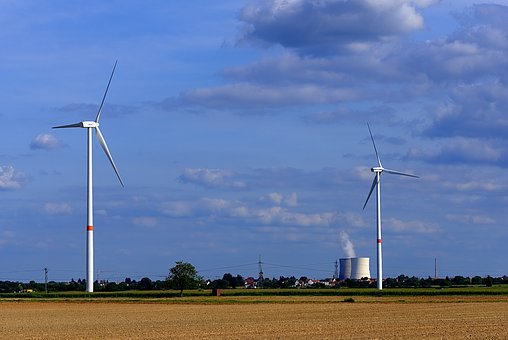U.S. renewable energy sources (including wind, solar, hydropower, biomass, and geothermal energy) accounted for more than a fifth (20.1%) of net domestic electrical generation during the first six months of 2019. This is according to a SUN DAY Campaign analysis of just-released data from the U.S. Energy Information Administration (EIA). A year earlier, renewables’ share was 19.9%.

Renewables are neck-and-neck with nuclear, and closing in on coal, for the top spot of U.S. electric generation, at least for the first half of 2019.
The latest issue of EIA’s “Electric Power Monthly” (with data through June 30, 2019) reveals that solar and wind both showed continued growth.
U.S. wind-generated electricity increased by 0.9% and topped that provided by hydropower by 0.4%. Wind’s share was 7.8% of total electrical output vs. 7.7% from hydropower. Combined, wind and solar accounted for 10.5% of U.S. electrical generation through the end of June.
Solar, including small-scale solar photovoltaic (PV) systems, increased by 10.5% compared to the first half of 2018 and accounted for 2.7% of the nation’s total net generation. Small-scale solar (e.g., distributed rooftop systems), which increased by 19.9%, provided nearly a third (32.7%) of total solar electrical generation.
In addition, biomass provided 1.5% and geothermal contributed a bit more than 0.4% (reflecting 2.2% growth).
Moreover, during the six-month period, electricity from renewable energy sources ran neck-and-neck with that from nuclear power — 399,585 vs. 400,005 thousand megawatt-hours or 20.11% vs. 20.14% of total domestic electrical output.
During the first half of 2019, renewables further closed the gap with coal. A year ago, renewables provided 74.6% as much electricity as coal. However, growth in renewable electrical output coupled with a 13.2% drop in that of coal has resulted in renewables generating 85.0% as much electricity as coal during the first six months of 2019.
The latest issue of EIA’s “Electric Power Monthly” was officially released on August 26, 2019.
For the data cited in this news update, click here and here.
Filed Under: News





It is easy to see why wind and solar show continued growth, they don’t have to deal with FERC. FERC claims that when hydro hooks to the grid it affects interstate commerce and must be federally regulated. In an example of blatant discrimination, when wind and solar grid tie there is no FERC involvement. It takes 6 to 10 years, sometimes more, to permit a hydro, even the small ones at an existing dam. How long does it take to get a wind turbine site built and running? How about an article showing that the triad of wind-solar-hydro is the best way to go but can’t be accomplished if hydro buildout continues to be suffocated.